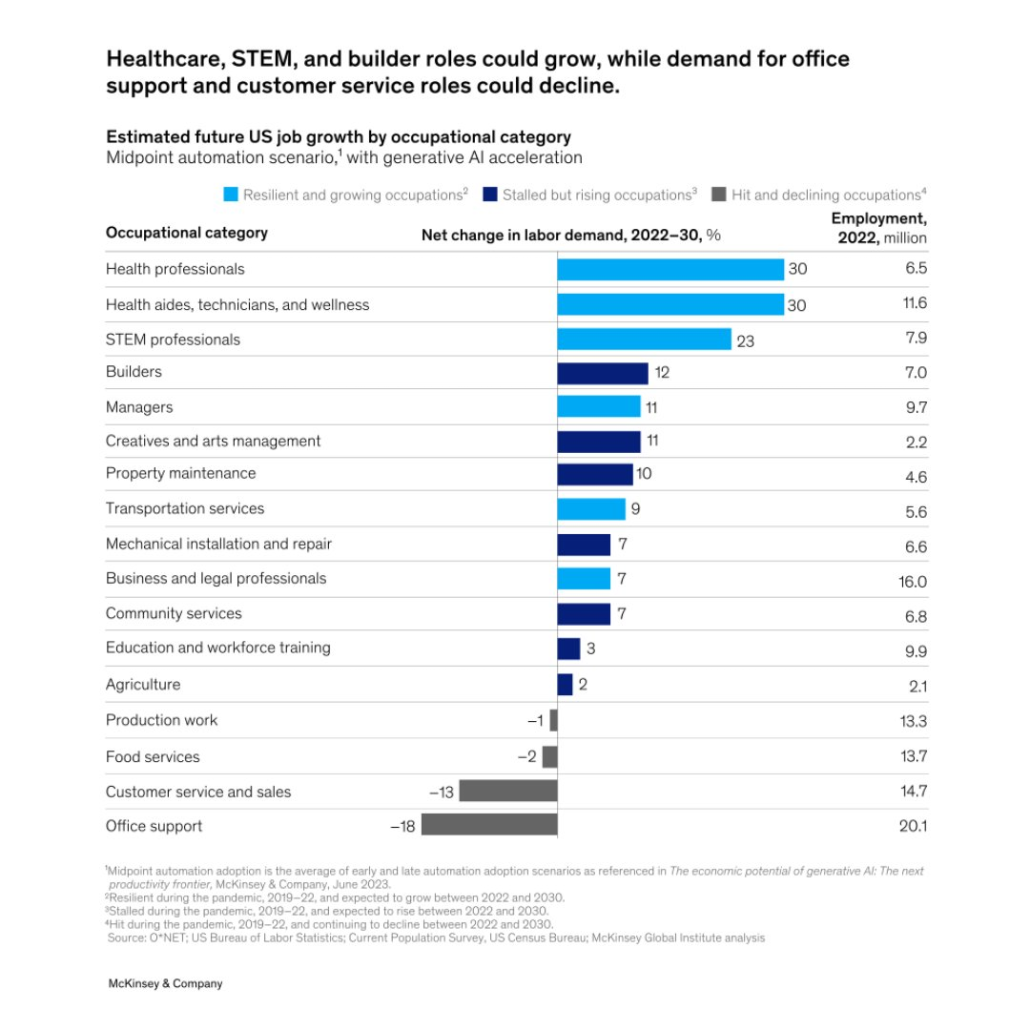How AI Can Benefit Small Businesses: How to Get Started with Applying AI
In our last piece we outlined the two generation of AI that are empowering businesses to achieve more, using less time and resources, as well as some of the many possible benefits that your business can enjoy from using it. For small businesses, getting started with applying AI does not have to be overly complicated. It all starts with mapping technological territories and workflows, identifying the potential for AI-driven solutions to address challenges and add value, and creating a roadmap for implementing these solutions into the business.
How Many Small Businesses Are Adopting AI?
A 2022 government report exploring the adoption of the latest generation of AI technologies such as data analytics and machine learning, provides some interesting insights.
Around 68% of large companies, 34% of medium sized companies, and 15% of small companies have adopted at least one next-gen AI technology. The majority of businesses have adopted or plan to adopt next-gen AI technology in the coming years, and even though adoptions of it are correlated to size, many innovative firms of all sizes are adopting AI today.
The good news is that in the next few years, it’s unlikely that most small businesses are going to be swept away by competitors using this form of AI, and this is also a great opportunity to start getting ahead and laying out a roadmap, including for simpler business process automations. On the other hand, further down the line, adopting the next generation of AI will become increasingly necessary to maintain a competitive edge.
So, how can your business get started with adopting AI to automate its defined business processes and to access more advanced features such as data analytics? Here are the three key steps:
Map Your Technological Territory and Workflows
Start by mapping out the technology that you use to undertake your workflows and list what automations could be possible within them. Some items on this list may be more viable for your business than others, but that’s okay, the next step will examine if they can be realised or not. There are other more certain opportunities within the technology that you might already be using. For example, many businesses are missing on some low-hanging fruit in their Microsoft 365 environment, which offers automation capabilities via its Power Automate tool.
By mapping your workflows and the tools involved in them, you can start to create a list of ideas for either enhancing or automating aspects of your workflows to empower your business.
Find and Assess AI-Driven Solutions
This step involves doing your homework and looking around for tools such as software, that can be used to automate or empower aspects of your workflows. You may be surprised by what you find! This research can pay off by helping you to find solutions, understand how they work and how compatible they are with your business, and with these insights, a better understanding of how they can be integrated into your business.
Assessment will also be crucial, as it is not always easy to quantify the benefit of a new technology solution without careful consideration. By comparing what new solutions can offer, and how they can benefit your business, you will be able to prioritise the solutions that stand to contribute the most value.
Create A Roadmap
You may already have a technology roadmap that AI-driven solutions can be integrated into, or perhaps you may want to make a roadmap from scratch. Either way, the roadmap lays out the timelines, steps, and considerations for implementing AI-driven solutions in your business in a way that will minimise disruption. The roadmap should be segmented into projects for each implementation, that will allow you to work with stakeholders, budget appropriately, prepare your business, and ensure a smooth series of implementations as your roadmap unfolds.
The roadmap will help you to prioritise the solutions to implement and provide a realistic timeline for preparing your business to integrate it fully. In all, it’s your practical plan for realising the benefits of AI in your business.
We hope that this piece has been a useful guide for getting started on your journey with AI. Remember, there is plenty of time to undertake careful planning to prepare your business for the transition, and many other businesses will likely be in a similar position. That said, the sooner you can get started, the more your business will be able to get ahead of the competition and use AI as a lever for achieving more profitable growth.
We Are 4TC Managed IT Services
4TC can support you with all the services you need to run your business effectively, from email and domain hosting to fully managing your whole IT infrastructure. Setting up a great IT infrastructure is just the first step. Keeping it up-to-date, safe and performing at its peak requires consistent attention.
We can act as either your IT department or to supplement an existing IT department. We pride ourselves in developing long-term relationships that add value to your business with high quality managed support, expert strategic advice, and professional project management. Get assistance with your IT challenges today by getting in touch, we’ll be glad to assist you!






